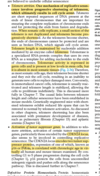MOD 1 part 2 Flashcards
(39 cards)
Apoptosis in physiologic situations
important for what physiologic situations?

Apoptosis in pathologic conditions?
apoptosis eliminates cells that are what?
what pathologic conditions can cause apoptosis? (4)
in pro what can also be seen?

morphologic features of cells undergoing apoptosis?

The intrinsic/extrinsic pathway of apoptosis
what causes signal to start?
what pathway?
what regulators?

Anti-apoptotic molecules? (3) work how? located where?
Pro-apoptotic? (2) work how?
sensors? (5) how many domain compared to the other two? what do they do?
Anti-apoptotic: BCL2, BCL-XL and MCL1 also 4 BH domains

Overall review of activation of intrinsic pathway.
BCL2 action decreased how? what then activates? this allows what?
cyto c binds to? this forms? which binds? then what happens here?
physiologic inhibitors of apoptosis called? neutralized by? when neutralized what can happen?

Extrinsic pathway of apoptosis
what receptor? located where?
what ligand? expressed on?
after binding what happens?
what is activated?
what can inhibit?

execution phase of apoptosis?
which pathway leads to activation of what caspase? what are the executioner caspases?
which activate?

what is seen as an eat me signal?
(3)

undfolded protein response and ER stress
normal conditions what is present that help stabilize?
what can cause misfolded proteins?
er stress is?
adaptation? failure of this?

Examples of apoptosis
growth factor deprivation- apoptosis caused by?
DNA damage- apoptosis caused by? stays in what phase? when apoptosis happens what pathway?
Protein misfolding- misfolded proteins are what? ER stress leads to? feature of what type of disease?

examples of apoptosis
apoptosis induced by TNF receptor family- what receptor/ligand?
cytoxic T lymphocyte-mediated apoptosis- what detected. what released?

dysregulated apoptosis
2 types?
most common genetic abnormality found in human cancers?
characterized by loss of cells?
second one also associated with 2. ischemic disease (heart attack) 3. death of virus-infected cells

Necroptosis
morphologically similar to? how?
mechanistically similar to? how? differs from this how?

Necroptosis
receptor/ligand? which recruits?
generation of what for cell death? similar to?

Pyroptosis?
what is it? what is released?
receptor activation activates? which causes? this cytokine does what? differs from apoptosis how?

Autophagy
steps? needs what for elongation?
LC3 is protein light chain 3 (a ubiquitin-like conjugation system)

3 types of autophagy?

autophagy role in human diseases? (4)

intraculluar accumulations
what 4 types?
what is accumulated?

lipid accumulation
steatosis (aka)
what is it? where? most common in liver?

lipid accumulation
cholesterol and choleterol esters
what processes would you have this? (4)
location?



protein accumulation
appear as what in cells?
causes? (5)


















